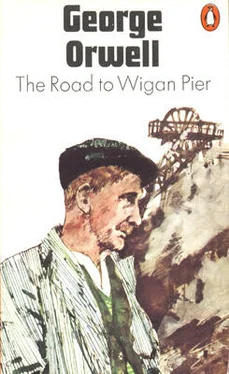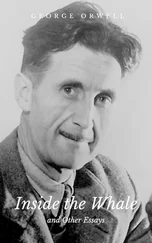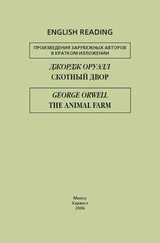George Orwell - The Road to Wigan Pier
Здесь есть возможность читать онлайн «George Orwell - The Road to Wigan Pier» весь текст электронной книги совершенно бесплатно (целиком полную версию без сокращений). В некоторых случаях можно слушать аудио, скачать через торрент в формате fb2 и присутствует краткое содержание. Жанр: Классическая проза, на английском языке. Описание произведения, (предисловие) а так же отзывы посетителей доступны на портале библиотеки ЛибКат.
- Название:The Road to Wigan Pier
- Автор:
- Жанр:
- Год:неизвестен
- ISBN:нет данных
- Рейтинг книги:5 / 5. Голосов: 1
-
Избранное:Добавить в избранное
- Отзывы:
-
Ваша оценка:
- 100
- 1
- 2
- 3
- 4
- 5
The Road to Wigan Pier: краткое содержание, описание и аннотация
Предлагаем к чтению аннотацию, описание, краткое содержание или предисловие (зависит от того, что написал сам автор книги «The Road to Wigan Pier»). Если вы не нашли необходимую информацию о книге — напишите в комментариях, мы постараемся отыскать её.
Эссе Оруэлла всегда умные, изысканно-злые и в чем-то парадоксальные.
Сейчас, как и в прошлом, многим они кажутся спорными и «скандальными». Почему? Да потому, что Джордж Оруэлл всегда современен!
The Road to Wigan Pier — читать онлайн бесплатно полную книгу (весь текст) целиком
Ниже представлен текст книги, разбитый по страницам. Система сохранения места последней прочитанной страницы, позволяет с удобством читать онлайн бесплатно книгу «The Road to Wigan Pier», без необходимости каждый раз заново искать на чём Вы остановились. Поставьте закладку, и сможете в любой момент перейти на страницу, на которой закончили чтение.
Интервал:
Закладка:
The whole of the industrial districts are really one enormous town, of about the same population as Greater London but, fortunately, of much larger area; so that even in the middle of them there is still room for patches of cleanness and decency. That is an encouraging thought. In spite of hard trying, man has not yet succeeded in doing his dirt everywhere. The earth is so vast and still so empty that even in the filthy heart of civilization you find fields where the grass is green instead of grey; perhaps if you looked for them you might even find streams with live fish in them instead of salmon tins. For quite a long time, perhaps another twenty minutes, the train was rolling through open country before the villa-civilization began to close in upon us again, and then the outer slums, and then the slag-heaps, belching chimneys, blast-furnaces, canals, and gasometers of another industrial town.
2
Our civilization, pace Chesterton, is founded on coal, more completely than one realizes until one stops to think about it. The machines that keep us alive, and the machines that make machines, are all directly or indirectly dependent upon coal. In the metabolism of the Western world the coal-miner is second in importance only to the man who ploughs the soil. He is a sort of caryatid upon whose shoulders nearly everything that is not grimy is supported. For this reason the actual process by which coal is extracted is well worth watching, if you get the chance and are willing to take the trouble.
When you go down a coal-mine it is important to try and get to the coal face when the ‘fillers’ are at work. This is not easy, because when the mine is working visitors are a nuisance and are not encouraged, but if you go at any other time, it is possible to come away with a totally wrong impression. On a Sunday, for instance, a mine seems almost peaceful. The time to go there is when the machines are roaring and the air is black with coal dust, and when you can actually see what the miners have to do. At those times the place is like hell, or at any rate like my own mental picture of hell. Most of the things one imagines in hell are if there — heat, noise, confusion, darkness, foul air, and, above all, unbearably cramped space. Everything except the fire, for there is no fire down there except the feeble beams of Davy lamps and electric torches which scarcely penetrate the clouds of coal dust.
When you have finally got there — and getting there is a in itself: I will explain that in a moment — you crawl through the last line of pit props and see opposite you a shiny black wall three or four feet high. This is the coal face. Overhead is the smooth ceiling made by the rock from which the coal has been cut; underneath is the rock again, so that the gallery you are in is only as high as the ledge of coal itself, probably not much more than a yard. The first impression of all, overmastering everything else for a while, is the frightful, deafening din from the conveyor belt which carries the coal away. You cannot see very far, because the fog of coal dust throws back the beam of your lamp, but you can see on either side of you the line of half-naked kneeling men, one to every four or five yards, driving their shovels under the fallen coal and flinging it swiftly over their left shoulders. They are feeding it on to the conveyor belt, a moving rubber, belt a couple of feet wide which runs a yard or two behind them. Down this belt a glittering river of coal races constantly. In a big mine it is carrying away several tons of coal every minute. It bears it off to some place in the main roads where it is shot into tubs holding half a tun, and thence dragged to the cages and hoisted to the outer air.
It is impossible to watch the ‘fillers’ at work without feelling a pang of envy for their toughness. It is a dreadful job that they do, an almost superhuman job by the standard of an ordinary person. For they are not only shifting monstrous quantities of coal, they are also doing, it in a position that doubles or trebles the work. They have got to remain kneeling all the while — they could hardly rise from their knees without hitting the ceiling — and you can easily see by trying it what a tremendous effort this means. Shovelling is comparatively easy when you are standing up, because you can use your knee and thigh to drive the shovel along; kneeling down, the whole of the strain is thrown upon your arm and belly muscles. And the other conditions do not exactly make things easier. There is the heat — it varies, but in some mines it is suffocating — and the coal dust that stuffs up your throat and nostrils and collects along your eyelids, and the unending rattle of the conveyor belt, which in that confined space is rather like the rattle of a machine gun. But the fillers look and work as though they were made of iron. They really do look like iron hammered iron statues — under the smooth coat of coal dust which clings to them from head to foot. It is only when you see miners down the mine and naked that you realize what splendid men, they are. Most of them are small (big men are at a disadvantage in that job) but nearly all of them have the most noble bodies; wide shoulders tapering to slender supple waists, and small pronounced buttocks and sinewy thighs, with not an ounce of waste flesh anywhere. In the hotter mines they wear only a pair of thin drawers, clogs and knee-pads; in the hottest mines of all, only the clogs and knee-pads. You can hardly tell by the look of them whether they are young or old. They may be any age up to sixty or even sixty-five, but when they are black and naked they all look alike. No one could do their work who had not a young man's body, and a figure fit for a guardsman at that, just a few pounds of extra flesh on the waist-line, and the constant bending would be impossible. You can never forget that spectacle once you have seen it — the line of bowed, kneeling figures, sooty black all over, driving their, huge shovels under the coal with stupendous force and speed. They are on the job for seven and a half hours, theoretically without a break, for there is no time ‘off’. Actually they, snatch a quarter of an hour or so at some time during the shift to eat the food they have brought with them, usually a hunk of bread and dripping and a bottle of cold tea. The first time I was watching the ‘fillers’ at work I put my hand upon some dreadful slimy thing among the coal dust. It was a chewed quid of tobacco. Nearly all the miners chew tobacco, which is said to be good against thirst.
Probably you have to go down several coal-mines before you can get much grasp of the processes that are going on round you. This is chiefly because the mere effort of getting from place to place; makes it difficult to notice anything else, In some ways it is even disappointing, or at least is unlike what you have, expected. You get into the cage, which is a steel box about as wide as a telephone box and two or three times as long. It holds ten men, but they pack it like pilchards in a tin, and a tall man cannot stand upright in it. The steel door shuts upon you, and somebody working the winding gear above drops you into the void. You have the usual momentary qualm in your belly and a bursting sensation in the ears, but not much sensation of movement till you get near the bottom, when the cage slows down so abruptly that you could swear it is going upwards again. In the middle of the run the cage probably touches sixty miles an hour; in some of the deeper mines it touches even more. When you crawl out at the bottom you are perhaps four hundred yards underground. That is to say you have a tolerable-sized mountain on top of you; hundreds of yards of solid rock, bones of extinct beasts, subsoil, flints, roots of growing things, green grass and cows grazing on it — all this suspended over your head and held back only by wooden props as thick as the calf of your leg. But because of the speed at which the cage has brought you down, and the complete blackness through which you have travelled, you hardly feel yourself deeper down than you would at the bottom of the Piccadilly tube.
Читать дальшеИнтервал:
Закладка:
Похожие книги на «The Road to Wigan Pier»
Представляем Вашему вниманию похожие книги на «The Road to Wigan Pier» списком для выбора. Мы отобрали схожую по названию и смыслу литературу в надежде предоставить читателям больше вариантов отыскать новые, интересные, ещё непрочитанные произведения.
Обсуждение, отзывы о книге «The Road to Wigan Pier» и просто собственные мнения читателей. Оставьте ваши комментарии, напишите, что Вы думаете о произведении, его смысле или главных героях. Укажите что конкретно понравилось, а что нет, и почему Вы так считаете.












